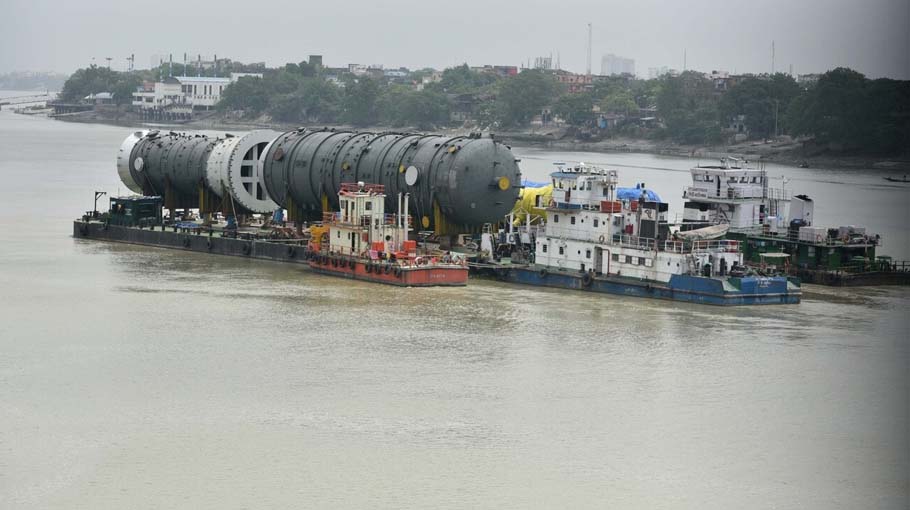The inland waterway project will spur growth
The multiplier effect of inland waterways spreads far beyond the rivers’ visible shores

In India, rivers are living embodiments of a great civilisation. People have a deep, abiding spiritual relationship with the rivers that crisscross the country. They are a source of livelihood to tens of millions of people and a vibrant habitat to millions of species.
Prime Minister (PM) Narendra Modi’s emphasis on developing national waterways is rooted in this civilisational identity. National waterways on rivers are potential economic multipliers that can generate jobs, boost tourism, create smart cities along their banks, ensure cleaner water supplies to cities and towns, foster aquatic life, and most importantly, enrich trade and transport not just across the region, but also open up alternative routes for the movement of cargo and people to foreign countries.
About 40 per cent of India’s population depends on the Ganga, directly or indirectly. The Ganga basin is one of the most densely populated river basins in the world with a population density of 520 people per sq. km.
Some voyages stand out from others. Not because of the significance of the moment but because they change the course of the future. February 5, 2022, could well be the beginning of one such that will open up new vistas in internal and international trade.
Rivers have been the cradles of India’s civilisational distinctiveness. The
development of national waterways as a powerful, well-organised network
for cargo and people’s movement is intended to turn these into one
of India’s strongest development anchors
More than 200 metric tonnes of food grains will travel from Patna in Bihar to Pandu in Assam on February 5, traversing the Ganga and the Brahmaputra. This marks a point of inflection in India’s cargo movement infrastructure, with shipment moving more than 2,350 km seamlessly on two of the world’s largest rivers, sailing on international waters through the Indo-Bangladesh Protocol (IBP) route, negotiating a delta on the Bay of Bengal, before moving on to the mighty Brahmaputra. The inland vessel, MV Lal Bahadur Shastri, will carry these food grains of the Food Corporation of India from Inland Water Terminal in Gaighat, Patna, marking the first food grain movement on this Inland Water Transport (IWT) route.
The 25-30 day journey will be an integrated IWT movement via National Waterway (NW)-1 (Ganga river), NW-97 (Sunderbans), IBP route and NW-2 (Brahmaputra river).
While on the voyage from Patna to Pandu (Guwahati), the vessel will pass through Bhagalpur, Manihari, Sahibganj, Farakka, Tribeni, Kolkata, Haldia, Hemnagar, Khulna, Narayanganj, Sirajganj, Chilmari, Dhubri and Jogighopa.
The cargo vessel movement is expected to establish the technical and commercial viability of the IWT mode using these multiple waterways. The IWT movement is also aimed at providing a fillip to the Northeast region’s industrial development by opening up an alternative route for transportation of goods.
The ambitious JMVP involves creating infrastructure worth ₹4,600 crore for the capacity augmentation of Ganga (National Waterway 1) for safe and sustainable movement of vessels up to 2,000 tonnes.
The journey from Patna to Pandu is also an exemplification of the PM Gati Shakti National Master Plan that aims to create seamless multi-modal connectivity for movement of people and cargo, with a focus on removing barriers to last-mile connectivity.
Inland waterways are the best, most eco-friendly, and economically efficient way to connect India.
The multiplier effect of inland waterways spreads far beyond the rivers’ visible shores. When goods and people travel on ferries and ships, it also helps create an attendant ecosystem that benefits intermediate industries such as cement and steel, besides sustaining a range of service-driven economic activities that come along with trade and commerce.
The Modi government aims to develop national waterways to cut logistics costs, make Indian industry competitive and develop India’s inland waterways as a viable, thriving mode of transport, especially for cargo. The inland waterways network spans close to 15,000 km across rivers, channels, backwaters and creeks.
Importantly, such infrastructure opens up slivers of new growth hotspots where industries can set up factories and plants in areas that were previously considered unviable because of lack of efficient cargo movement infrastructure.
Rivers have been the cradles of India’s civilisational distinctiveness. The development of national waterways as a powerful, well-organised network for cargo and people’s movement is intended to turn these into one of India’s strongest develop
ment anchors.
Sarbananda Sonowal is Union minister of ports, shipping and waterways, and Ayush




